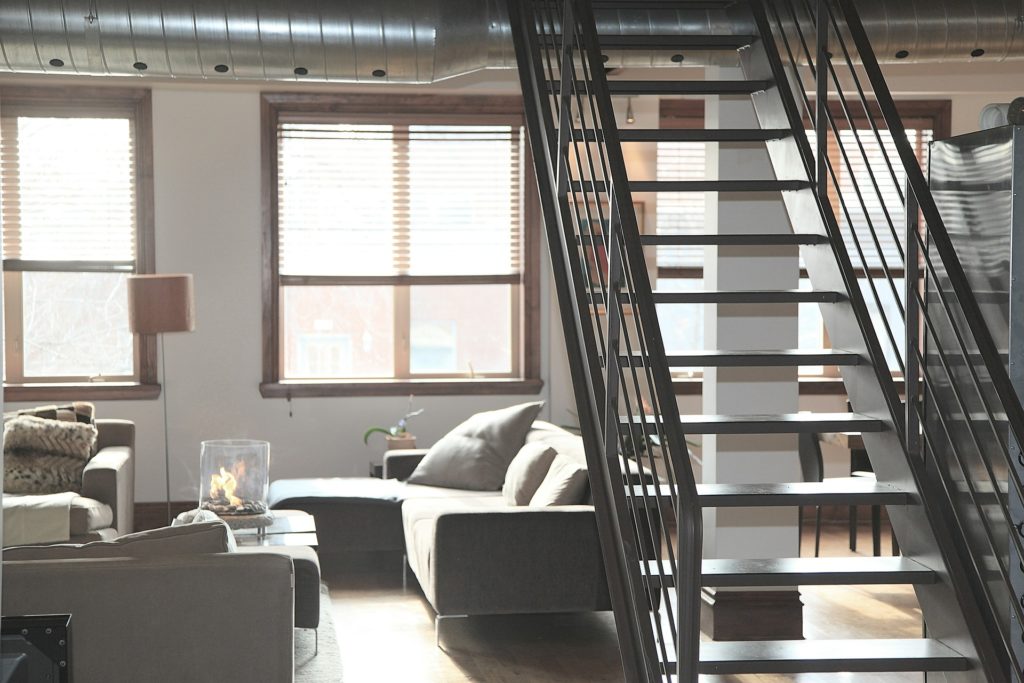Stairs, indoor or outdoor, are an essential aspect of any home, office environment, or place of work. Stairs provide access to different levels of a building and serve as a safe means of passage between floors. Stairs are also commonly used as emergency exits and fire escapes.
Although stairs allow us to access different areas of a building easily, they can also pose a potential safety hazard. Individuals with back problems or walking difficulties could find it hard to climb a set of stairs without injuring themselves. Furthermore, poorly designed stairs with inadequate safety features could be dangerous to use. Most stairs installed in a home or an office do meet minimum safety requirements but may not have advanced features that will prevent accidents.
If you want to ensure your stairs are infinitely safe, why not consider some of the below safety features that are easy to implement?

By adding secure handrails or banisters
The most common way to make stairs safer is to add railings on both sides of the staircase. This will provide something to hold on to while climbing up and down the stairs. A staircase without a handrail or banister can be a huge safety concern. For those who lack stability on their feet, or find it difficult to walk downstairs, a handrail is an absolute necessity. A handrail or banister provides something an individual can hold onto for balance and safety when walking downstairs.
A handrail can easily be installed, and aside from the improved safety, it can also make a staircase look aesthetically pleasing. Handrails can be simply screwed into the staircase wall, or, if the stairs are open, you can consider a banister complete with vertical rails. This simple safety measure will ensure that anyone using the staircase has an anchor point to hold onto.
By adding LED lighting
If stairs are enclosed, they can often appear dark. Furthermore, if a dark shade of material is used for the actual stairs, people with poor sight may struggle to see each step. Poorly lit stairs can lead to people missing their footing or stumbling down a staircase.
A simple solution that can make a staircase more visible is to add LED lighting. LED light strips provide a fantastic source of light, and they can be combined with little effort to a staircase. A common best practice is to attach LED strips underneath the lip of each stair – this provides simple illumination and can make a huge difference to the visibility of the stairs. Furthermore, if a pale color is chosen, such as white or golden yellow, your stairs can be transformed into a beautifully lit walkway.
By adding traction mats
Stairs are often made from smooth surfaces such as wood that are slippery. A carpeted stair will provide a significant amount of traction, while a wooden stair will not. It only takes someone to slip on uncarpeted stairs, causing injury and serving as a real danger hazard.
Traction mats can provide additional grip on a staircase and can significantly improve a person’s traction. This type of tread is usually made from rubber or other rough materials that have a high degree of resistance. This functional device can be installed for a minimum cost and could potentially save businesses thousands in accident claims.
By implementing a contrasting color scheme
A staircase will often feature a single color scheme – each stair will be painted with the same color. This is perfectly fine from a design point of view, but it can cause a potential safety hazard. A mono-color staircase can make each stair hard to identify. To rectify this, you could consider using a contrasting color scheme – why not paint your stairs in alternative colors, so each separate stair is noticeable?
Keep hazards out of your way
Always make sure no objects are present on the stairs. No matter how small an object might be, it is a trippy hazard that increases the risks of falls.
Pay attention!
Similar to when you drive, pay attention to each of your steps up or down the stairs. Avoid texting, emailing, or searching on your smartphone. A trivial distraction such as checking on your social media notification might cost you a fall. Avoid carrying anything which encroaches on your line of vision, or which prevents you from holding on the handrail.
Stairlifts
Adding a stairlift is another way of making a set of stairs safer. Stairlifts can be installed on both curved and straight staircases. Often installed for seniors that have limited mobility, they can easily move from one story to another.
As you can see, improving the safety of a staircase is not complicated. All it takes is a little planning and consideration. Review the safety of your staircases today and see if you would benefit from these improvements.



